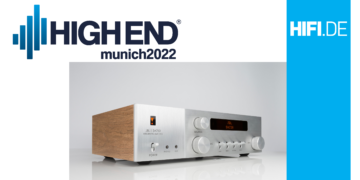| HIFI-FORUM » PC, Netzwerk & Multimedia » Mediacenter » Mediacenter Software » Mein Ubuntu 10.04 HTPC mit XBMC - Audiofragen | |
|
|
||||
Mein Ubuntu 10.04 HTPC mit XBMC - Audiofragen+A -A |
||
| Autor |
| |
|
PoLyAmId
Inventar |
#1
erstellt: 19. Jul 2011, 08:58

|
|
|
Mittlerweile hab ich meine Linux Ubuntu Konfiguration ganz gut im Griff. XBMC läuft toll incl PVR, diesem mächtigen TVHeadend und so, hat klasse Umschaltzeiten und sowas. Naja nun steckt halt der Teufel im Detail wie das bei solchen Sachen halt so ist: Unter Windows 7 kann ich meine Audio Ausgabe wunderbar konfigurieren. Stell ich dort bei Wiedergabegeräte auf Digital Audio (S/PDIF) dann hab ich alles an Ton komplett auf der Stereoanlage über Toslink. Damit geht dann DTS Passthrough und so weiter und so fort vollautomatisch. Hab dann noch Analog angeschlossen nen 2.1 Boxenset. Wenn ich das ansteuern will und keinen dicken Bums brauche stell ich einfach Wiedergabegeräte auf Analog und der Ton kommt komplett über die 2.1 Anlage An so einer Selbstverständlichkeit brech ich mir unter Linux was ab: Dort wird die Ausgabe mithilfe von Alsa und Pulseaudio realisiert. Es gibt auch hier unter Ubuntu 10.04 ein Audio Einstellungs Tool, welches den Alsa Server steuert. Dort greift dann z.B. das XBMC als Client drauf zu. Ich kann dann unter Karteikarte Hardware zwar von Analog audio out auf IEC958 Digital Output Duplex stellen, dem XBMC ist das allerdings herzlich egal. Dort habe ich zwar im Audio Menu unter System auf Optical/Coax gestellt, Auf 5.1 mit DTS kompatibelität und unter Audiogeräte etwas rumprobiert, sowie Passthrough auf IEC958 gestellt, erreiche damit allerdings nur Digitalausgabe bei DVDs oder Audio Files, die richtiges 5.1 Digital Audio unterstützen. Die Sounds vom XBMC Menu oder von Stereo Analog Quellen kommen mit jeder Einstellung leider nur über den Analog Out raus. Windwos wandelt mir da ja dann alles auf S/PDIF um. Wie stell ich das so ein, dass ich mir hier aussuchen kann ob ich Audio komplett über Digital oder komplett über PC Boxen bekomme?? Je nach Situation? |
||
|
noisestadt
Stammgast |
#2
erstellt: 20. Jul 2011, 21:23

|
|
|
Ich kann dir zwar keine Lösung anbieten, aber vielleicht helfen dir folgende Ansätze. Benötigst du eine komplette Desktopumgebung, sprich Gnome und andere Programme außer XBMC und PVR Funktion? Falls nein, könntest Du nämlich auf Gnome und damit auch auf Pulse verzichten, das könnte dein Szenario vereinfachen. Erreichen läßt sich das z.B. mit einer minimalen Installation mittels XBMC LiveCD. Ansonsten such mal im  offiziellen XBMC Forum nach "asound.conf", damit lässt sich die Ausgabe auf die analogen und digitalen Ausgänge regeln. offiziellen XBMC Forum nach "asound.conf", damit lässt sich die Ausgabe auf die analogen und digitalen Ausgänge regeln. |
||
|
|
||
|
PoLyAmId
Inventar |
#3
erstellt: 21. Jul 2011, 08:39

|
|
|
So, zwei Tage und einige graue Haare später klappt es nun endlich. Bin dazu übergegangen mir die ~/.asoundrc zu erstellen und die Soundausgabe von Hand zu konfigurieren. Dabei hab ich mir auch einen Abend lang die Zähne ausgebrochen, bis ich gemerkt habe, dass es am Ende wirklich an Pulseaudio liegt oder vielmehr daran, dass es die Ubuntu Macher nicht gerissen bekommen das ordentlich zu integrieren. Das Problem liegt folgendermaßen: Alsa bietet die Grundlage für die Soundkonfiguration und steuert die Hardware ziemlich direkt. dazwischen liegt dann noch ne Schnittstelle zu Gnome und darauf zur Konfiguration das Pulseaudio mit seinem Mixer. Pulseaudio ist allerdings ziemlich fett in den Desktop eingebunden bei Ubuntu und deshalb hab ich nicht die Eier gehabt den einfach vom System zu fegen. Leider ist mein PC nämlich nicht nur ein reines Media Center und ich benutze die Oberfläche für viele Dinge. Es gibt auch eine Möglichkeit Pulse etwas eleganter zu entfernen durch Umbenennung der Installationsverzeichnisse im Paketmanager, ich hab mir aber diese Arbeit nicht gemacht, denn es geht auch ohne. Als ich erstmal begriffen hatte, dass der Mute auf dem SPDIF im Alsa durch Pulse den Müll verursacht und nicht eine fehlerhafte ~/.asoundrc konnte ich das Problem bei der Wurzel packen. Richtig gut gelöst wird das Problem durch die ~/.asoundrc aus dem Wiki für MythTV. damit schafft man sich mehrere Plugins, die genau das ermöglichen was ich brauche: Möglichkeit sich am Pulseaudio vorbei im XBMC zwischen diversen Ausgabemöglichkeiten zu entscheiden und Setzen einer Option als Standart. Das Ganze dann getrennt für Passthrough und PCM downmix Kram. So kann ich mich jeder Zeit entscheiden ob ich Ton über Analog, über digital oder gemixt aus beiden. hier mal die Config, ist super erklärt alles. vielleicht hat ja jemand ein ähnliches Problem wie ich und bekommts dadurch auch gerissen.
Danach kann man im XBMC einfach in den Audio Einstellung die Ausgabe Passthrough Benutzerdefiniert auf ALSA:digital oder ALSA:mixed-digital stellen und für die normale Ausgabe hab ich ALSA:multi genommen glaub ich bei bedarf kann noch folgendes angehängt werden um alles immer auf beide Kanäle zu mixen:
|
||
|
speefak
Ist häufiger hier |
#4
erstellt: 08. Mrz 2012, 16:23

|
|
|
ich nutze ebenfalls XBMC als standalone oberfläche ( standalone paket ) und bie mir greifen die configs kein stück es ändert sich nichts, egal welche der 4 sektionen im config header ich auskommentiere oder an welche stelle ich config datei kopiere. es muss doch möglich sein über spdif normalen stereosound auszugeben und gleichzeit über HDMI die AC3 spur. von mir aus auch andersherum; hauptsache ich habe einen digitalanschluss für stereo ( schlafzimmer tv ) und einen für die AC3 ausgabe ( Wohnzimmer mit AVR) ich nutze ein zotac ion itx -f, ob jack oder alsa bei dem standalone paket, bzw autologin zur xbmc oberfläche geladen wird weis ich grad auch nicht wirklich. wo kann ich sonst noch ansaetzen um den o.g. mehrkanal und stereo ton parrallel abzugreifen ? |
||
|
*mad-max*
Stammgast |
#5
erstellt: 08. Mrz 2012, 16:48

|
|
|
Also wenn du beides gleichzeitig nutzen möchtest guck doch mal hier:  http://forum.xbmc.org/showthread.php?t=86038 http://forum.xbmc.org/showthread.php?t=86038mad-max |
||
|
speefak
Ist häufiger hier |
#6
erstellt: 09. Mrz 2012, 14:04

|
|
|
danke für den tipp nur hab ich die einstellmöglichkeiten bei meinem system im cbmx nicht :/ ist meine auf ubuntu 10.04 basierende distri vllt zu alt ? edit : hab nur fast die ganze 40 seiten durch. so wie es aussieht scheint es nur für die 32bit linux variante einen gepatchte datei zu geben ;/ [Beitrag von speefak am 09. Mrz 2012, 14:40 bearbeitet] |
||
|
*mad-max*
Stammgast |
#7
erstellt: 09. Mrz 2012, 14:42

|
|
|
Nein, dass geht einfach mit der Standard Installation nicht... Du musst mal schauen, ob schon jemand für dein System eine passende XBMC.bin hochgeladen hat... Wenn nicht musst du das GIT clonen, den Patch drauf bügeln und dann das ganze selber kompilieren... Guck einfach mal hier:  http://wiki.xbmc.org...mpile_XBMC_for_Linux http://wiki.xbmc.org...mpile_XBMC_for_Linuxmm |
||
|
speefak
Ist häufiger hier |
#8
erstellt: 10. Mrz 2012, 14:03

|
|
|
ich glaube bevor ich mir das compilieren antue warte ich noh knapp 8 wochen bis ich auf die neue LTS 12.04 umstelle, dann muss ich eh alles neu aufsetzten. nutze mein VDR rechner als produktivsystem zum tv gucken, als webserver und fileserver, wenn der ausfällt wär das wirklich ärgerlich. edit : bau den xbmc grad inner VM neu. mit checkinstall läst sich da ein hoffentlich kompatibles *deb mit bauen. den ganzen compiler kram wollte ich nicht unbedingt auf meinem produktiv VDR haben. [Beitrag von speefak am 10. Mrz 2012, 15:20 bearbeitet] |
||
|
speefak
Ist häufiger hier |
#9
erstellt: 10. Mrz 2012, 19:15

|
|
|
so habs nu mit den patches mal neu compiliert und festgestellt : ich habe das auf den screenshots dargestellte options menu in der audio sektion nicht :/ des weiteren fehlt auch die TV sektion, sprich ich kann mit der selbstcompilierten version kein tv gucken bzw. keine verbindung zum VDR aufbauen :/ |
||
|
PoLyAmId
Inventar |
#10
erstellt: 11. Mrz 2012, 11:23

|
|
|
Das normale XBMC hat doch gar keine TV Funktionen. Da brauch man eher Margos oder Dushmaniacs PVR version. Wir irgendwann später mal zusammengeführt. |
||
|
speefak
Ist häufiger hier |
#11
erstellt: 14. Mrz 2012, 21:15

|
|
|
ich nutze die yavdr version mit xbmc frontend auf ubuntu 10.04 basis. dort ist TV, VDPA etc alles dabei. |
||
|
PoLyAmId
Inventar |
#12
erstellt: 15. Mrz 2012, 11:03

|
|
|
Ich hab auch noch Ubuntu 10.04 drunter. Ich hab immer noch Schiss vor der Konfiguration meiner Fernbedienung und dem Sound unter Oneiric. |
||
|
speefak
Ist häufiger hier |
#13
erstellt: 15. Mrz 2012, 18:29

|
|
|
FB ist doch recht einfach zu konfigurieren. zum thema sound : vor ca 3 wochen gabs ein xbmc update und seit dem stützt xbmc ab, wenn ich beim laufenden film von mp3 auf stereo umstelle. pausiere ich den film stelle um und las ihn dann weiter laufen is das kein ding. optimal wäre die o.g. config. HDMI und spdif oder toslink mit AC3 und stereo laufen zu lassen. |
||
|
PoLyAmId
Inventar |
#14
erstellt: 15. Mrz 2012, 20:11

|
|
|
Also bei meiner ist das Problem, dass der Empfänger nicht im Lirc eingetragen ist. Das muss ich von Hand machen und das neu compilieren. Ist leider etwas komplex aber machbar. Bei Lucid hab ich das schon ganz gut raus. |
||
| ||
|
|
||||
| Das könnte Dich auch interessieren: |
|
Ubuntu XBMC findet keine Festplatte Shaitan87 am 26.06.2012 – Letzte Antwort am 08.07.2012 – 8 Beiträge |
|
HTPC mit vorinstalliertem XBMC vollerempfang am 27.11.2012 – Letzte Antwort am 21.12.2012 – 8 Beiträge |
|
Aktuellen Mac Mini vollwertiger XBMC-HTPC ? #hifi_fan am 21.11.2012 – Letzte Antwort am 22.08.2013 – 21 Beiträge |
|
filmwiedergabe bei xbmc und popcorn afterhour gleichwertig? contadino am 06.10.2011 – Letzte Antwort am 07.10.2011 – 4 Beiträge |
|
Kombination Ubuntu XBMC und DLP-Link 3d OK? contadino am 26.08.2011 – Letzte Antwort am 09.09.2011 – 8 Beiträge |
|
XBMC Airplay Problem benne2885 am 15.06.2012 – Letzte Antwort am 17.06.2012 – 5 Beiträge |
|
XBMC Fastboot darkknight187 am 19.10.2011 – Letzte Antwort am 19.01.2012 – 8 Beiträge |
|
XBMC Problem? KBC6 am 07.12.2011 – Letzte Antwort am 15.12.2011 – 6 Beiträge |
|
Webserver XBMC Graschi am 08.01.2012 – Letzte Antwort am 17.01.2012 – 5 Beiträge |
|
XBMC Touchscreen Infodisplay Thoom am 21.02.2011 – Letzte Antwort am 22.02.2011 – 5 Beiträge |
Anzeige
Produkte in diesem Thread

Aktuelle Aktion
Top 10 Threads der letzten 7 Tage

- Hotel Modus deaktivieren
- "diese anwendung wird jetzt neu gestartet um mehr speicherplatz verfügbar zu machen"
- Von HD+ zurück zu Standard-TV
- Remotekabel anschließen, aber wie und wo?
- Hisense verbindet sich nicht mehr mit dem WLAN
- Audiodeskription ausschalten (in ZDF App) 803er
- Umschalten von TV auf Radio
- Satellitenschüssel was und wie einstellen am TV
- Pro 7 und Sat 1 auf einmal weg.
- Markierung an Lautsprecherkabel - welche Norm?
Top 10 Threads der letzten 50 Tage

- Hotel Modus deaktivieren
- "diese anwendung wird jetzt neu gestartet um mehr speicherplatz verfügbar zu machen"
- Von HD+ zurück zu Standard-TV
- Remotekabel anschließen, aber wie und wo?
- Hisense verbindet sich nicht mehr mit dem WLAN
- Audiodeskription ausschalten (in ZDF App) 803er
- Umschalten von TV auf Radio
- Satellitenschüssel was und wie einstellen am TV
- Pro 7 und Sat 1 auf einmal weg.
- Markierung an Lautsprecherkabel - welche Norm?
Top 10 Suchanfragen

Forumsstatistik

- Registrierte Mitglieder928.668 ( Heute: 1 )
- Neuestes Mitgliedsarahbell371359
- Gesamtzahl an Themen1.558.720
- Gesamtzahl an Beiträgen21.708.987










